I’d like to do a writeup on the board game that was my absolute favorite as a child and what got me interested in RPGs and Fantasy more than anything else. It’s the Swedish game Drakborgen, released in 1985.
A literal translation of the name Drakborgen would be something like The Dragon Castle. It was translated by Games Workshop at the time, and released under the name Dungeon Quest.
I’ll be looking at the original Swedish version though, with lots of photos taken by me. There’ll be lots of Swedish words in the pictures, and I won’t bother translating much of it – you’ll just have to deal with that 🙂
For a board game at the time, it had a lot of rules. There were four dense pages, at a time when most games had rules that fit comfortably on the inside of the lid.

But then there were these additional little cards with rules for special situations, printed front and back. That was a lot to wrap my head around for 10-year-old me who had yet to come across an RPG rule book
The game had this huge game board with nothing on it. On each turn of the game, you would move your character (each player starting in one of the towers) and if you moved into a blank space, you would draw a tile showing the room you just entered and place it on the board.
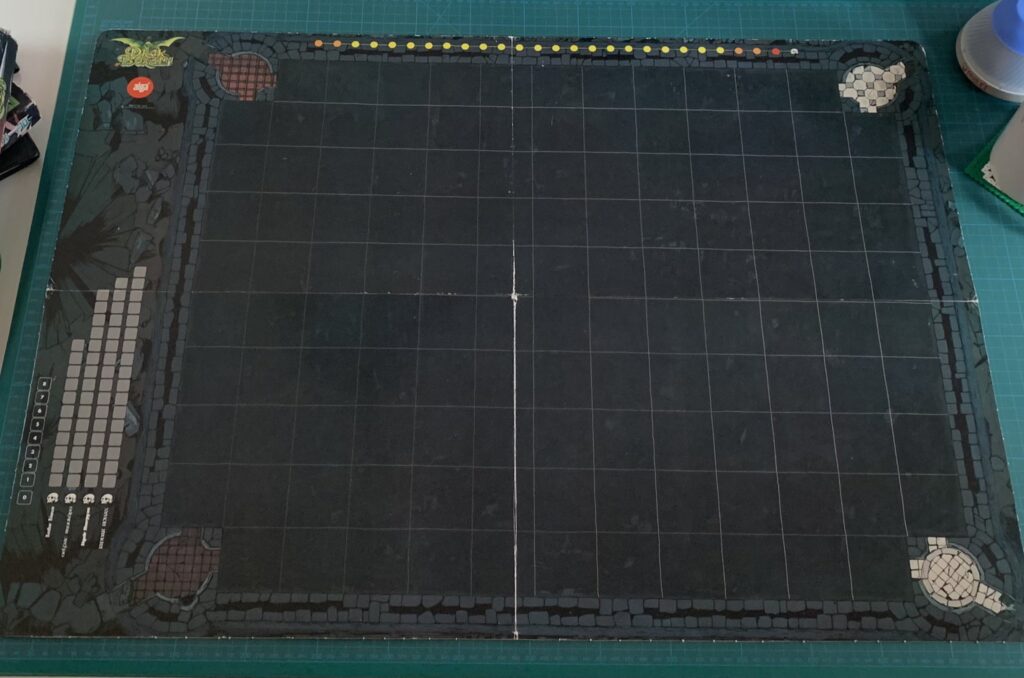
I still love the look of the tiles. Simple, but so effective in establishing atmosphere. That goes for all the artwork in the game – I’m very nostalgic about it, and still think it looks really awesome 🙂
Of course, when playing, the board would never get this dense with tiles…
One of the tiles was special a double sizes treasure room, where the dragon lay sleeping on his hoard. Before the game started, this tile was placed in the center of the board, and the objective was to make your way into it, and steal some treasure without waking the dragon
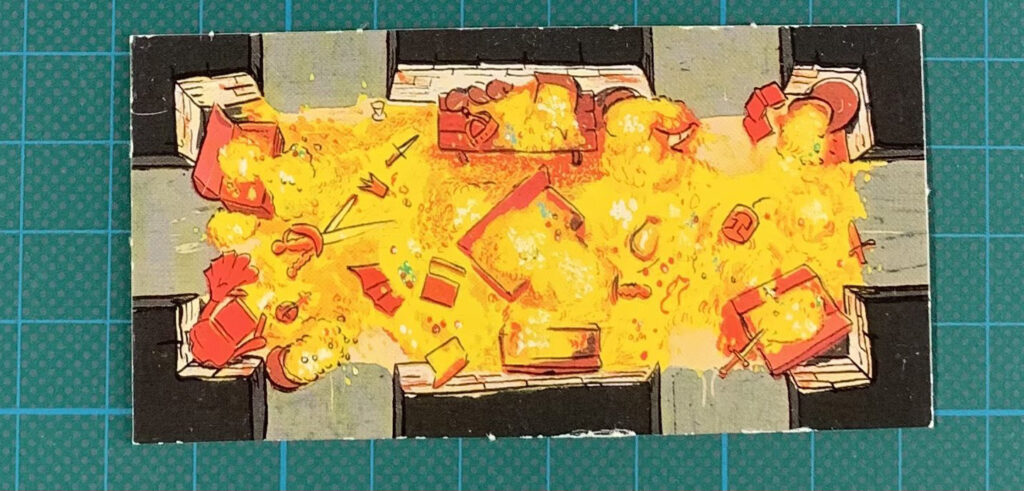
However, you only had a fixed number of turns to make it there *and* out again. A counter moves forward after all players has done a turn, and if you are still in the castle when it reaches the end, you die and have lost the game.

There were four different playable characters (and you could play the game with 1-4 players), all with different attributes and abilities
I think it’s a nice touch that the characters have a different illustration on the back, rather than just having the same picture on both sides.
At the start of the game, each player gets an enchanted ring – each ring has a different effect, and can only be used once.
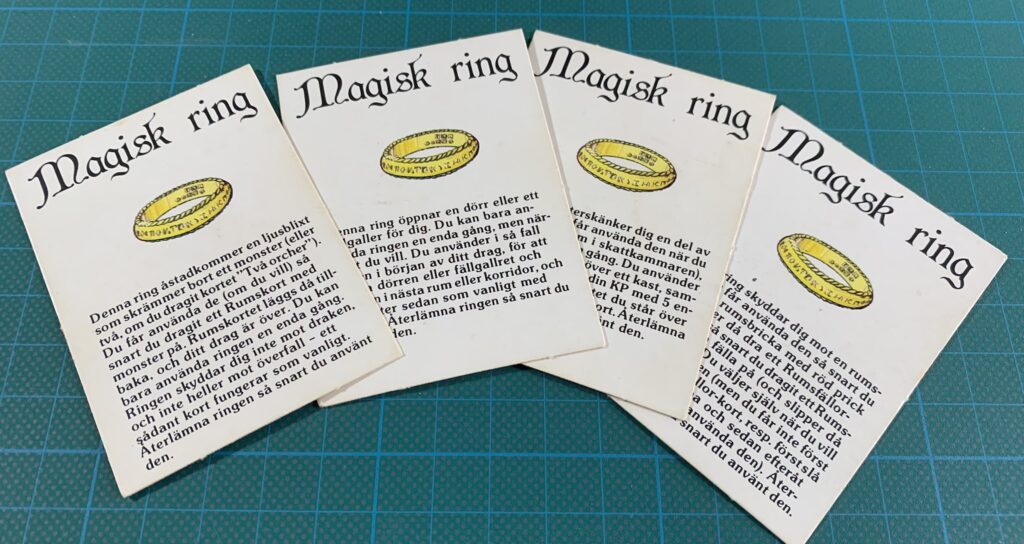
As you move through the rooms, you draw from different types of cards. There are cards for searching a room, opening chests or doors, resolving monster encounters, searching corpses, walking into a trap, and just for entering or re-entering a room. And also for Stealing treasure.
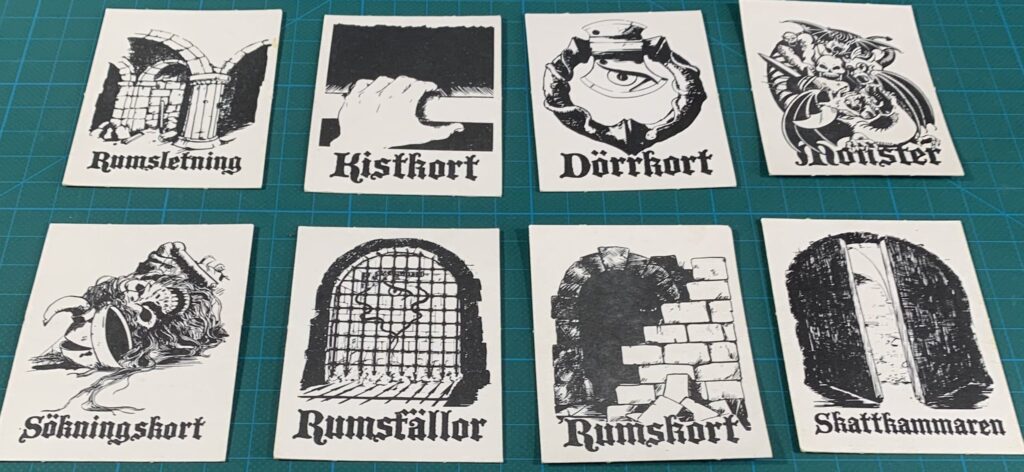
Every time you enter a room, you draw a card. Most often, you get one that says ”Empty” and nothing happens.
But there are other cards to. You might find a chest or a sarcophagus, and if you do, you can choose to open it if you like
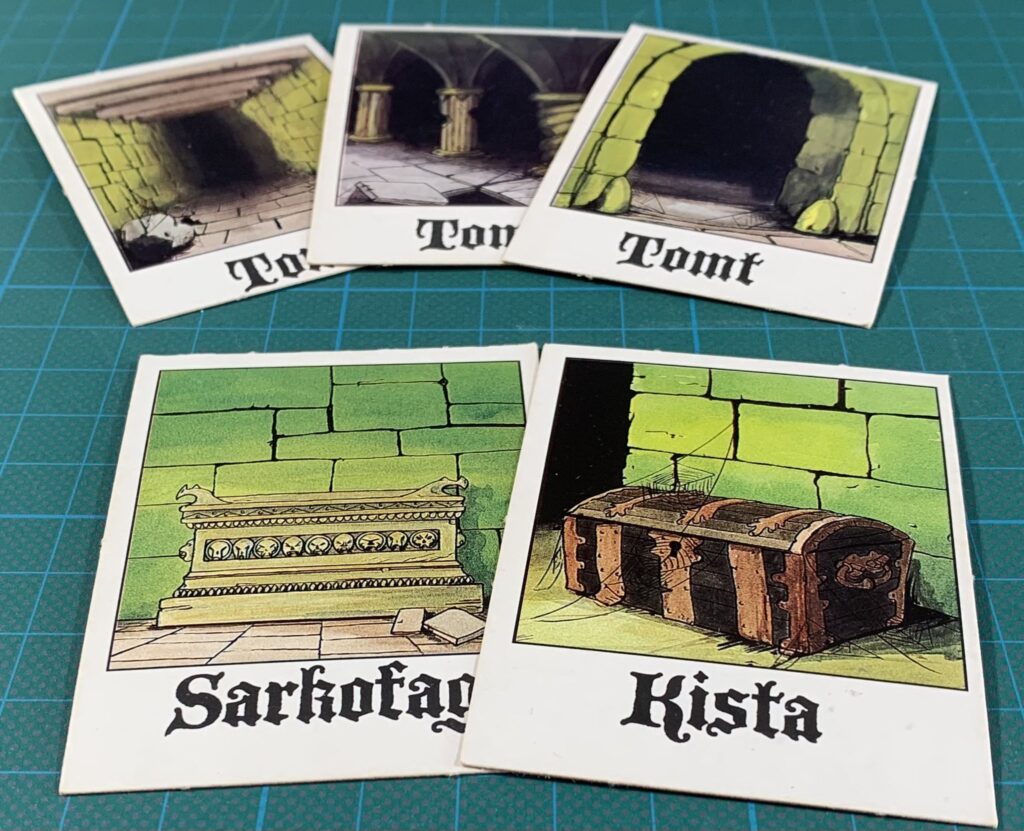
If you do open it, you draw a card from another pile, specifically for chests. Mostly it’s empty, but you can also find treasure or potions, be hurt by a trap or find some old bones. There’s a chance the skeleton will come alive and attack you.

There are other things that can happen when entering a room as well. You can find treasure or potions, or you can find the remains of a fallen warrior. Just like with the chests, you can choose to search the body, by drawing a card from a special “search remains” card pile.
Searching the remains have a chance of turning up nothing, but you can also be stung by a scorpion, find treasure or potions, or find a piece of rope, which you can use later if you fall down a trapdoor.
Other things that could happen when entering a room, was triggering traps or encounter a giant spider or a swarm of bats. The bats just dealt damage, but the spider had some special rules and dice rolls to determine the outcome.
You could also encounter one of four different types of monsters: orcs, skeletons, trolls or goblins. Some could be in the form of an ambush. For encounters, you would draw another card, “Monster”, to resolve what happens, and if there’s a fight, use the black/white A/B/C cards.
Resolving an encounter, you would state whether you attack, flee, or just wait and see what happens. Then you would draw a card and look up how the monster reacted and how strong it is. Goblins often run away when you attack them, trolls rarely do.
If the result is battle, one of the other players will play the monster, and you each use the A/B/C cards (there are ones for each player character as well) to play out a rock/paper/scissors type of game until either the monster or the player is dead.
The hitpoints of each character is tracked on the side of the game board, with a separate one for the monster currently being fought.
Once you’ve entered a room and the card you drew have played out (including any battle, your turn is done). But next turn, you can choose to search the room rather than move on.
Searching a room might turn up nothing, or you could find treasure ore potions, or be bitten by a venomous crawler. You may also find a hidden passage, which was invaluable when you had hit a dead end. There was alsoa chance to trigger a trap, and then you would draw a trap card.
Searching a room was not the only way to trigger a trap. Drawing one of these special tiles would also mean drawing a trap card, triggering one of the traps: toxic fog, explosions, venomous vipers, a trapdoor or the roof collapsing.
Traps was not the only special effect tile. There were also rooms filled with junk that you had to fight your way through, and could trap you for several turns, rooms that would rotate, leaving you no way back, bottomless pits and rooms so dark that you’d take a random exit.
Some rooms would have a portcullis, slamming close behind you, and blocking your way out unless you manage to beat it down. Some rooms had doors, and you could try to open it if you wanted to.
If you tried to open a door, you would draw another card to resolve what happens. It could open or remain shut, or you could get hurt by a trap.
And those various potions you can find here and there? There are rules for what happens if you attempt to drink it. Nothing might happen, you may heal a few hitpoints, or lose some. There’s a one in 12 chance that you die instantly!
If you do make it to the treasure room, you have a chance to steal treasure, and each turn you can draw two treasure cards. Mostly you just get coins, but sometimes you find nicer things.
I love this artwork. Makes me feel like Bilbo stealing treasures from Smaug 🙂
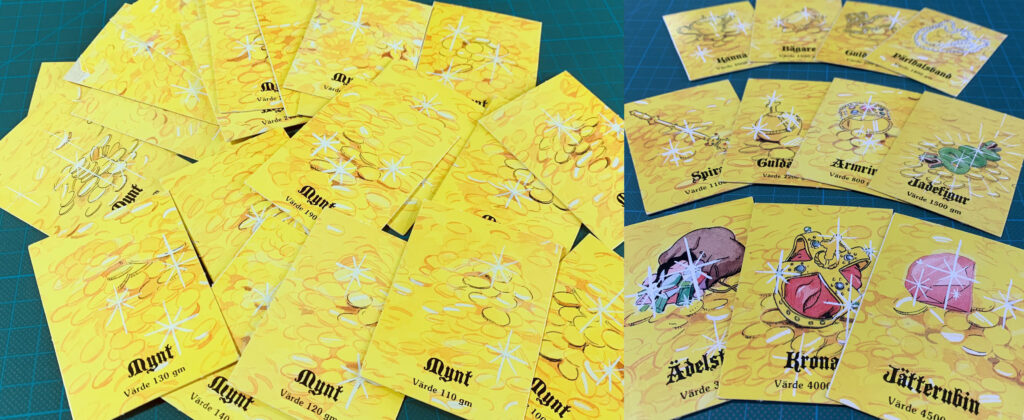
Each turn you stay in the treasure room, you can draw two treasure cards. But you also have to draw one dragon card. There are 8 of them, and you draw one randomly. If it depicts a sleeping dragon, all is well – but you remove that card from the game.
If it depicts an angry dragon, you would have to put all your treasures back, lose a bunch of hitpoints, and move out of the treasure room. And the risk of waking the dragon increased every time a sleeping dragon card was removed.
So, that’s basically all the parts of the game. It was really difficult, and you rarely made it out alive, but it provided me with hours and hours of fun as a child 🙂
There was also an extension released, with more mechanics and more player characters. I might write about that one some other day.
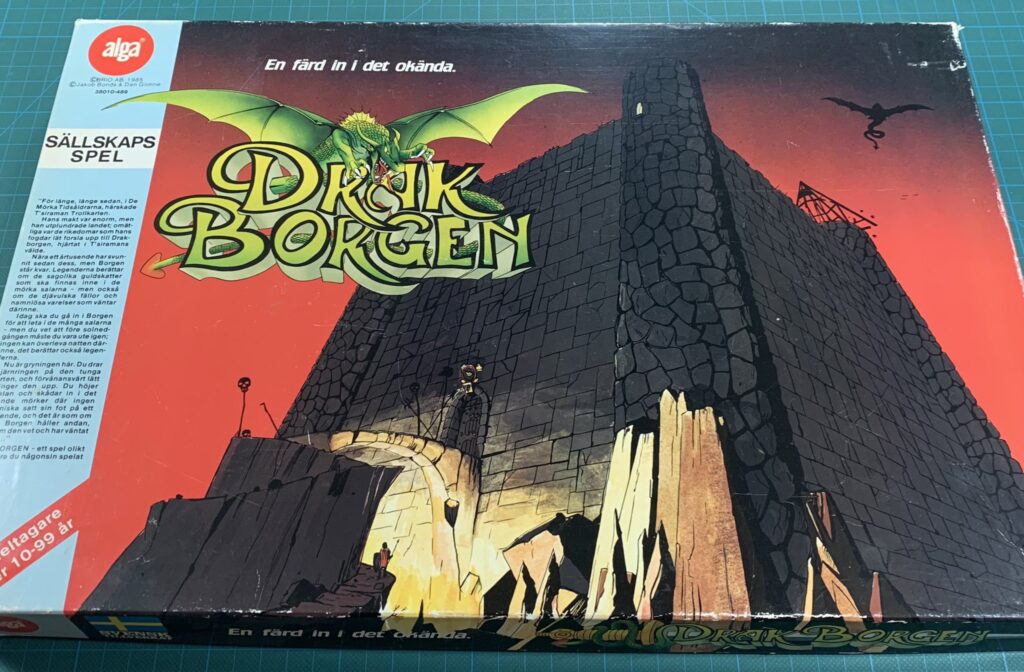
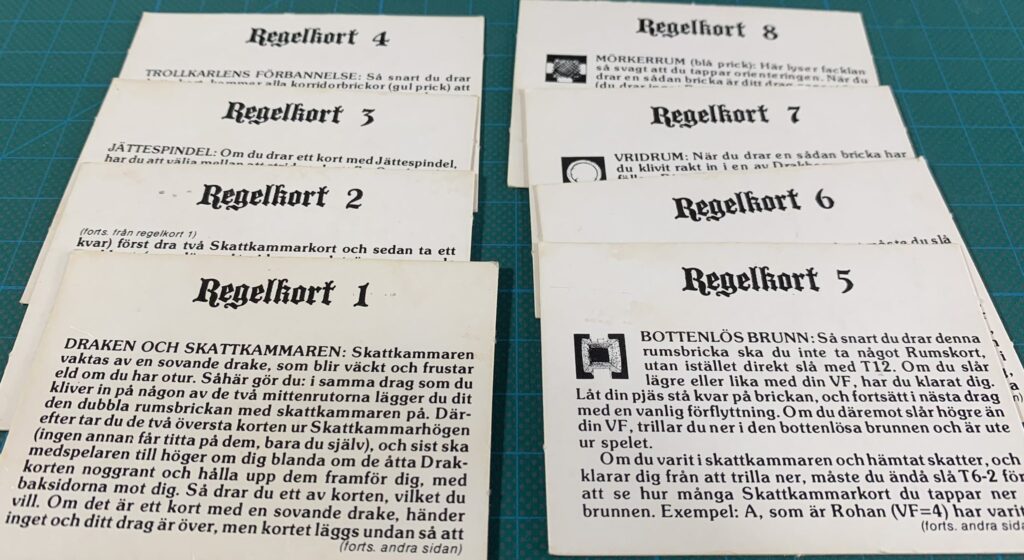
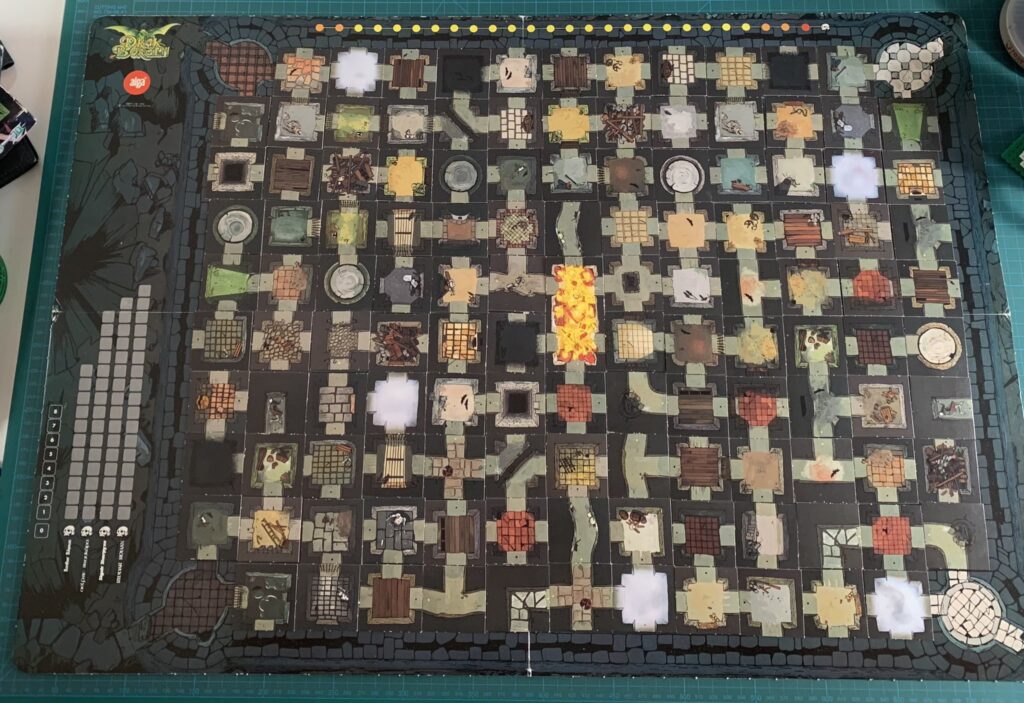
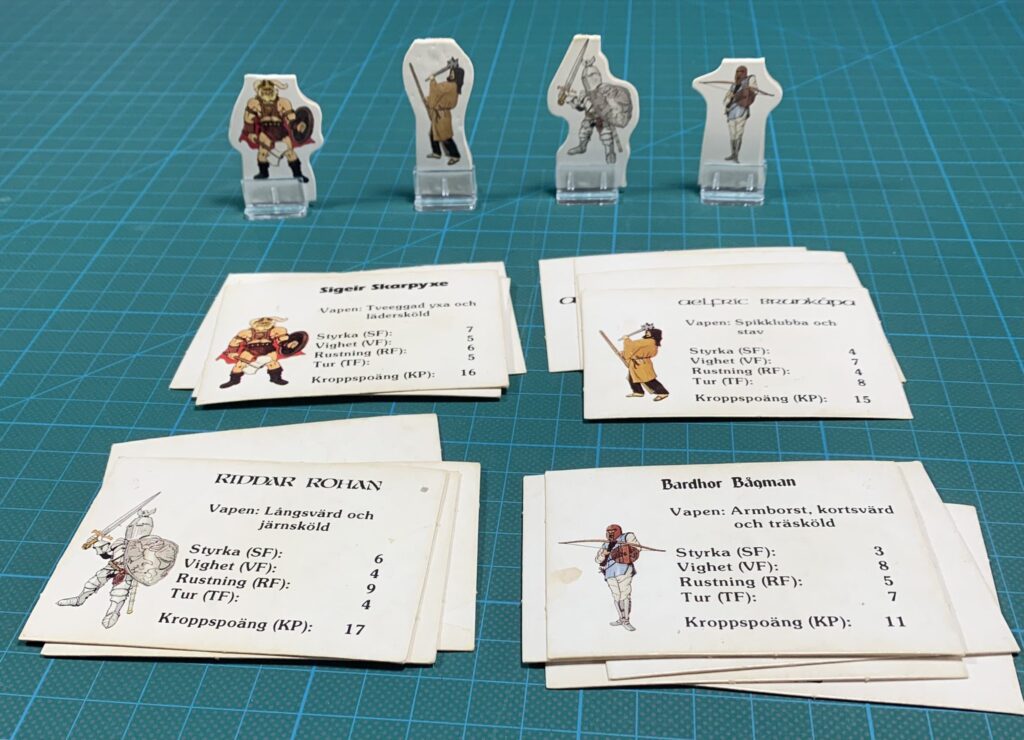

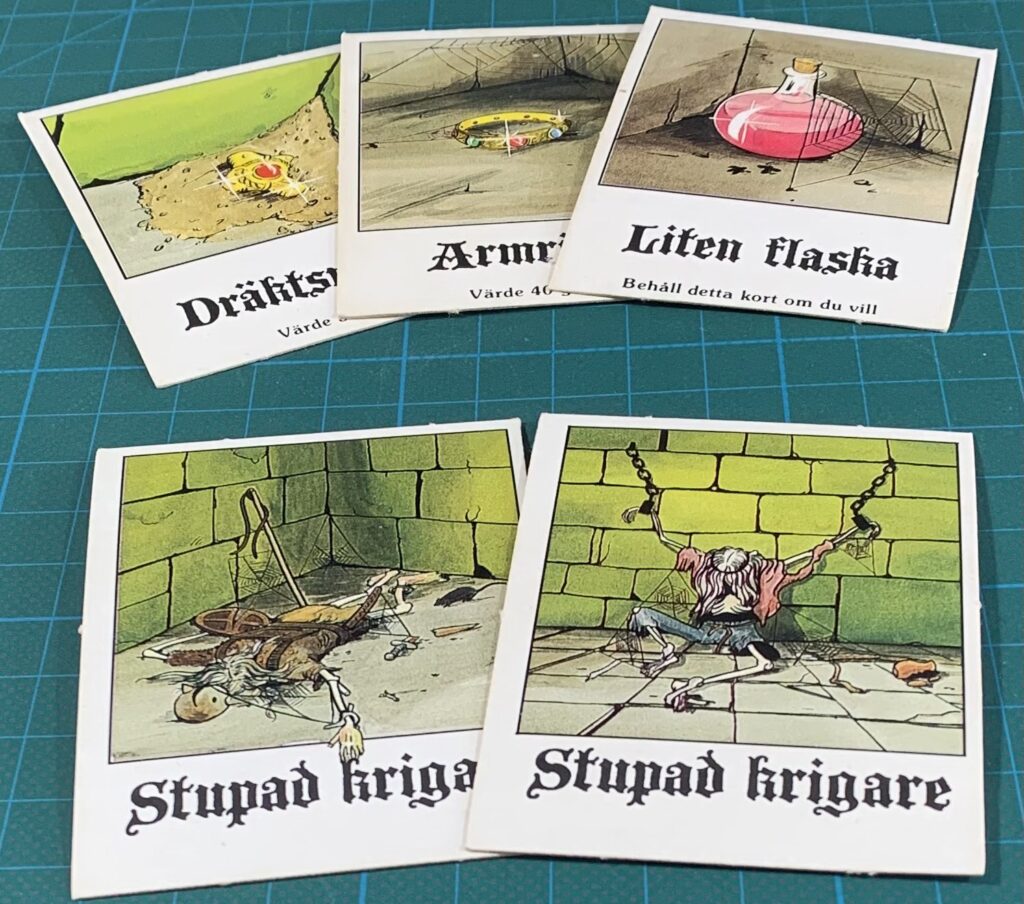

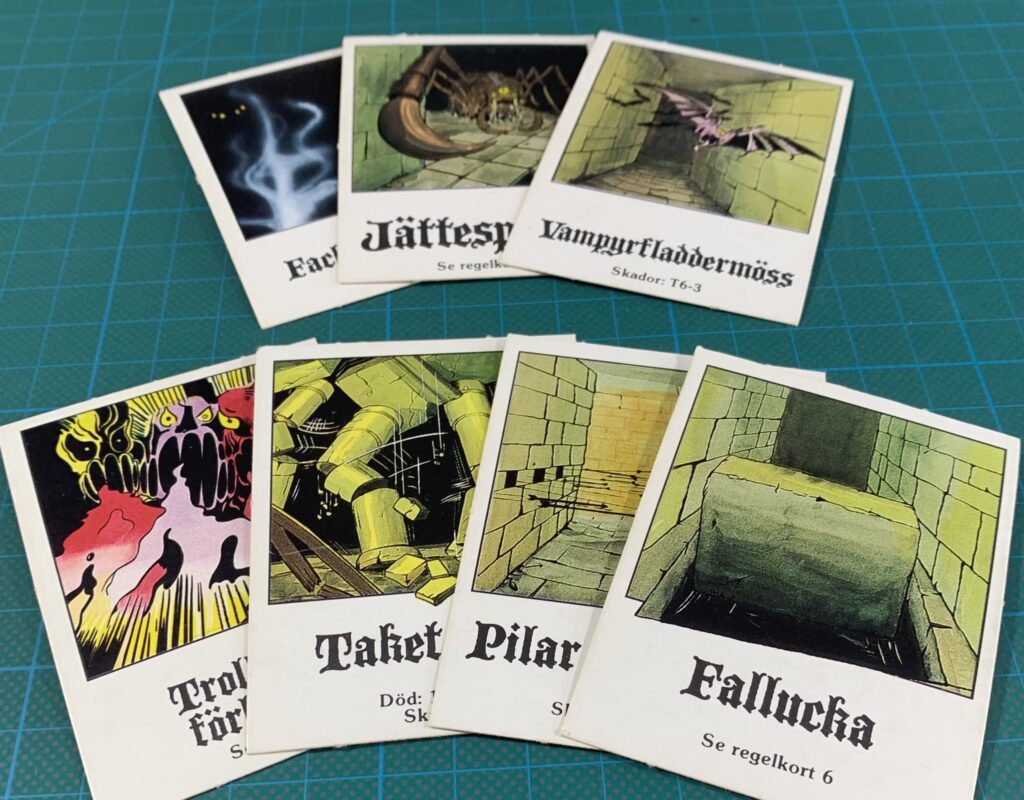
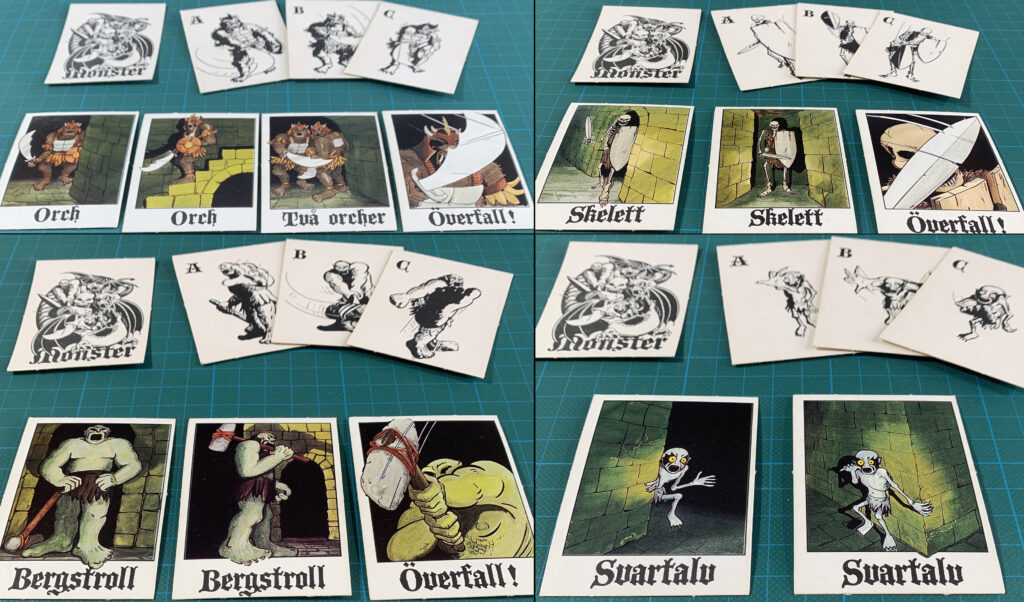

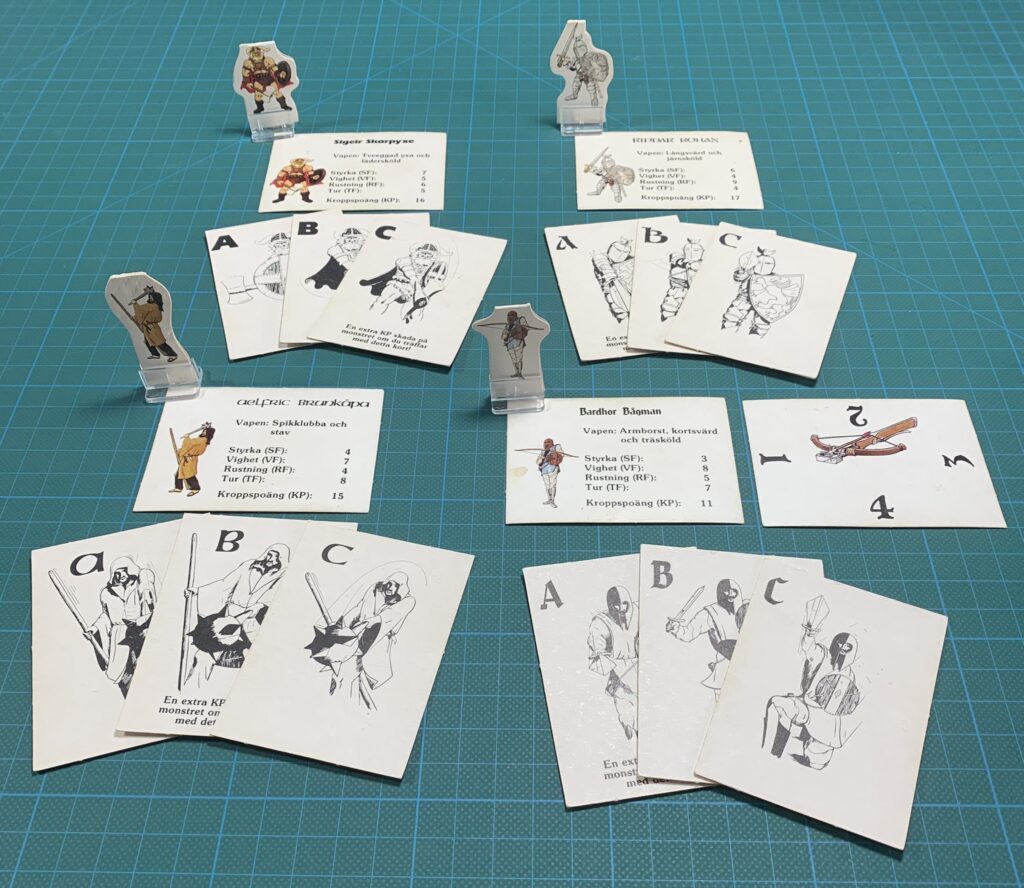
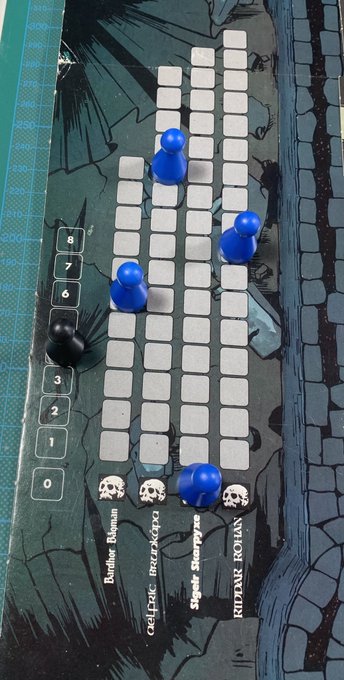
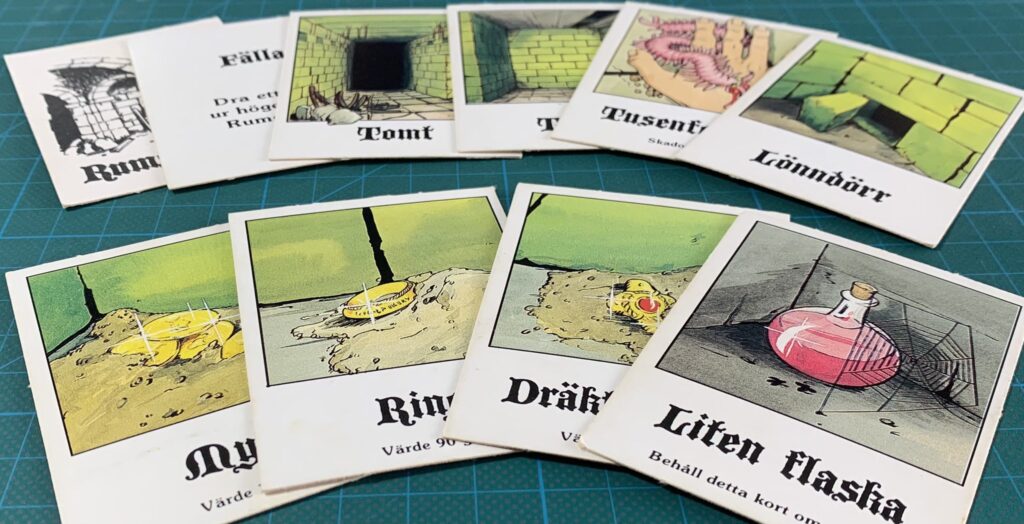
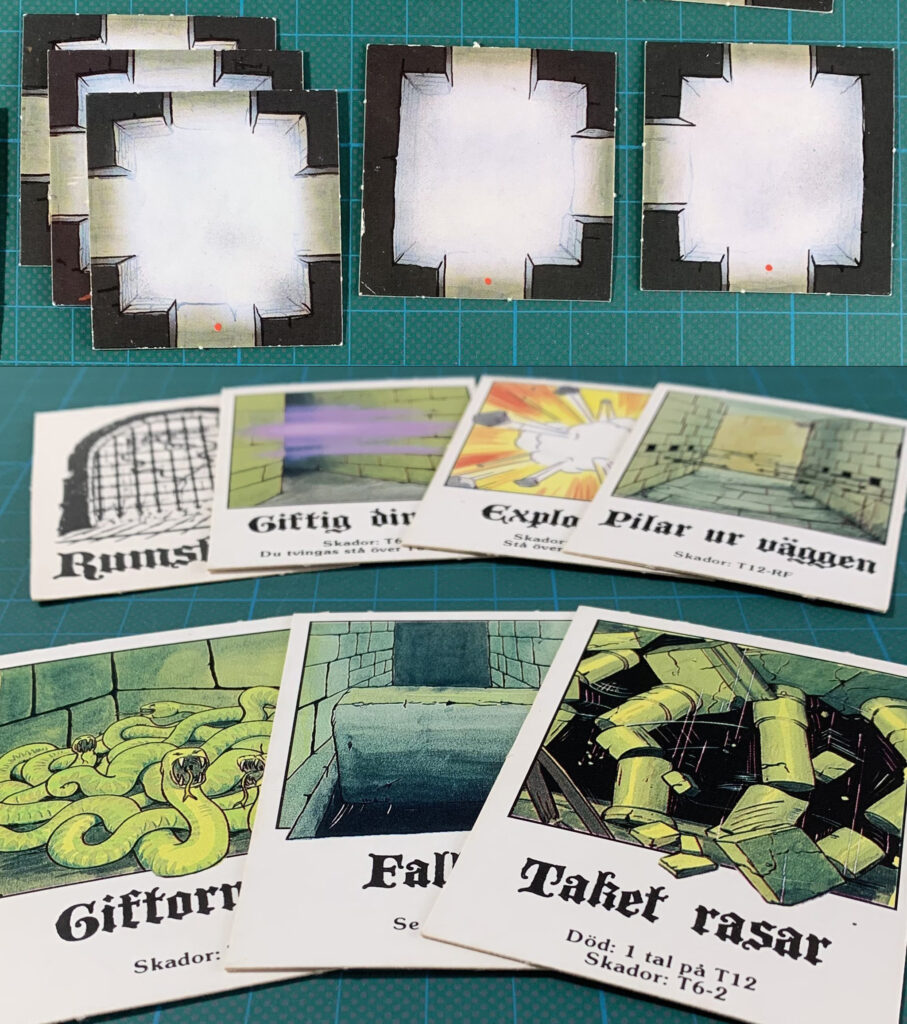
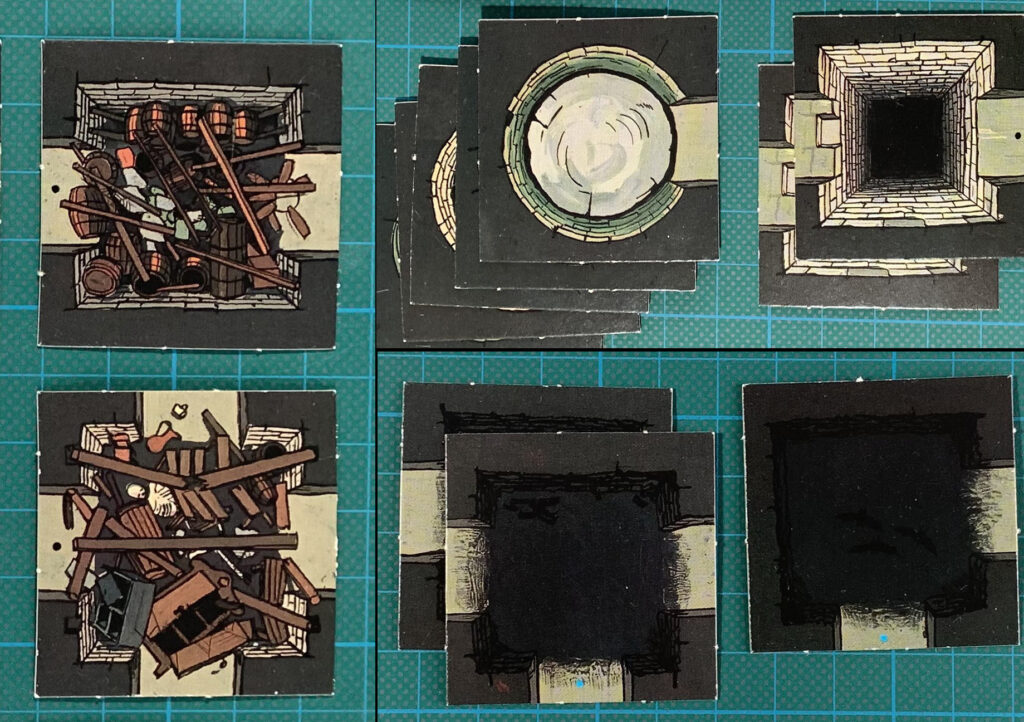
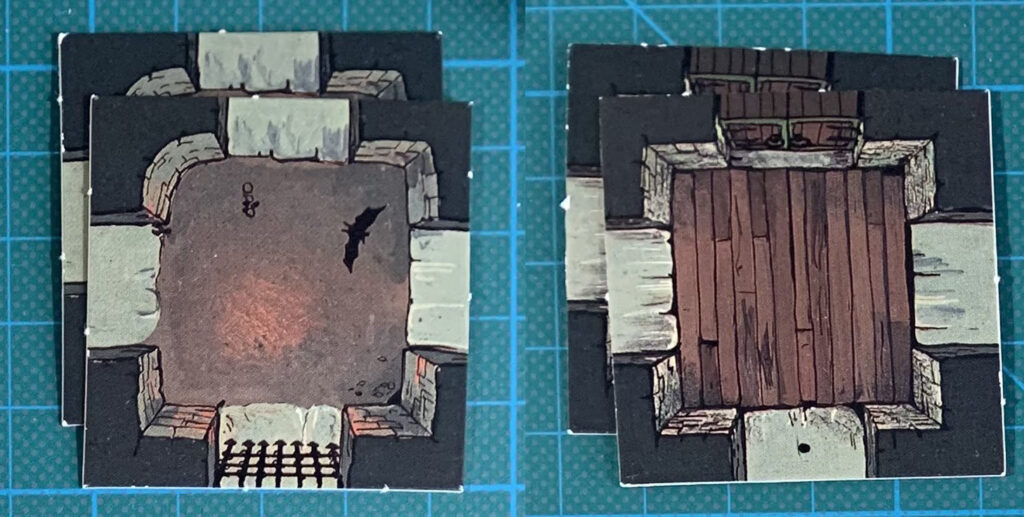
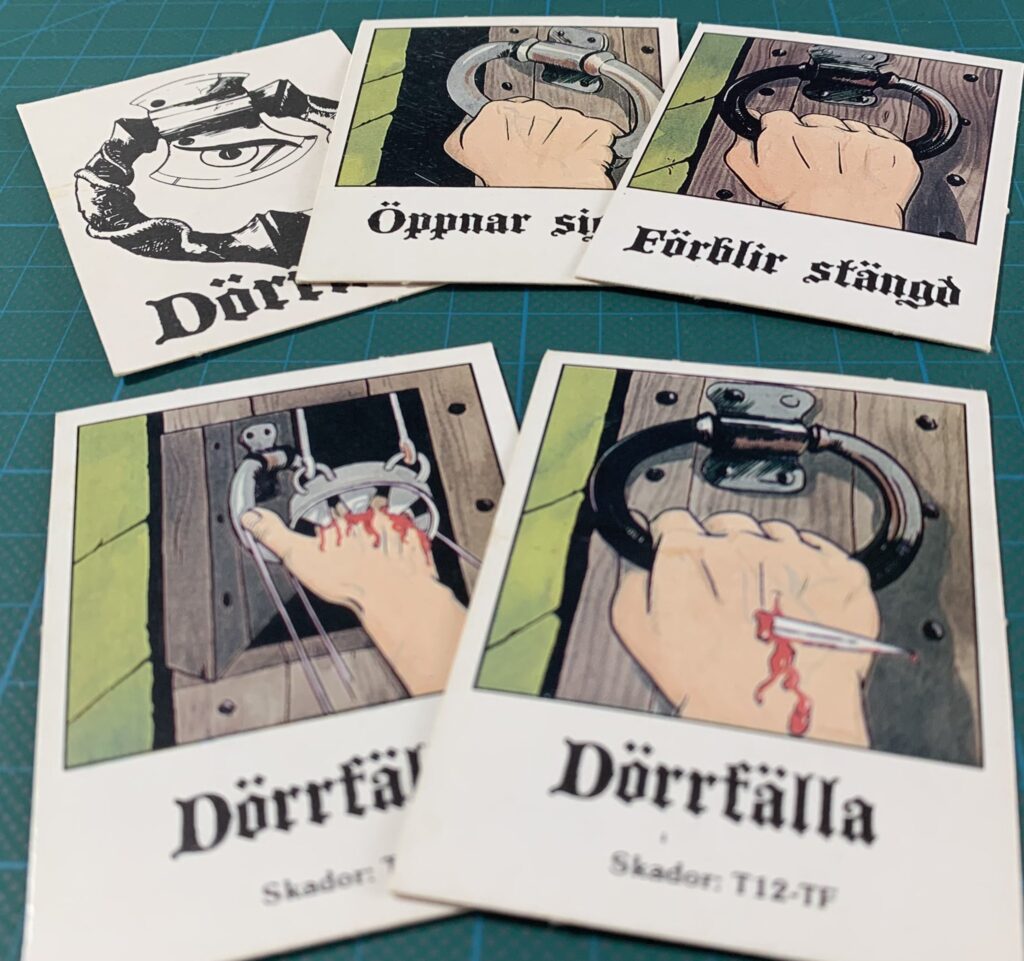

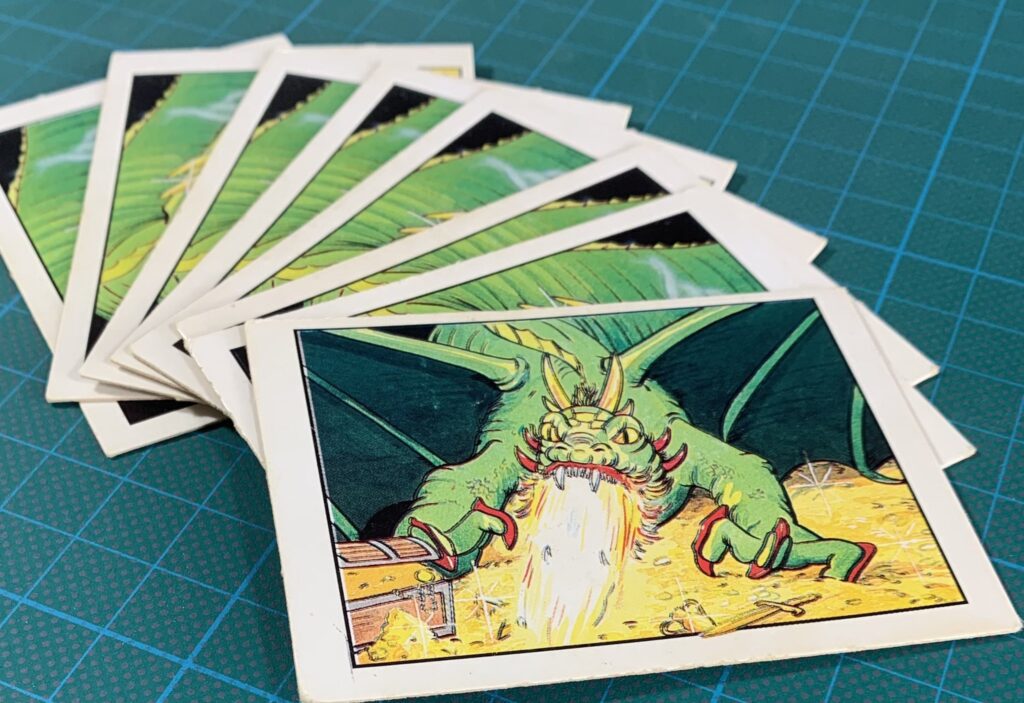
Leave a Reply